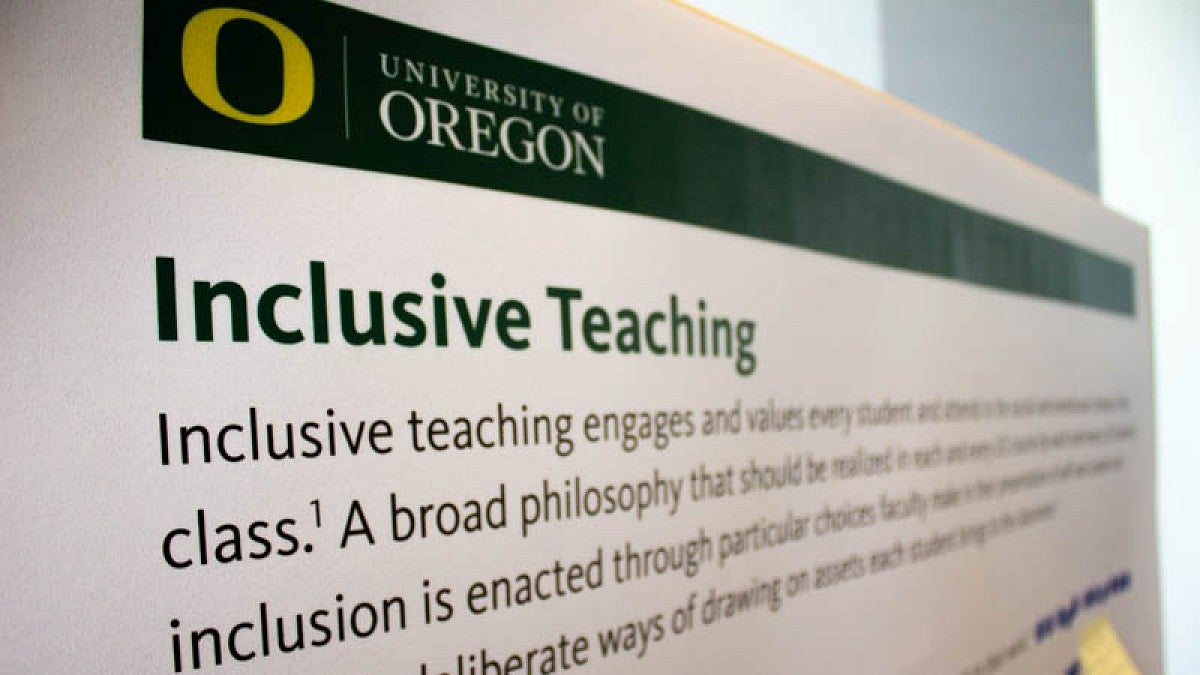Starting this fall, course evaluations will be replaced with learning-focused student experience surveys and a new system for evaluating teaching at the University of Oregon.
The new system is intended to reduce implicit bias in responses, align with standards for teaching quality and include comments from students, peers and instructors.
“This effort marks our commitment to enhance teaching and to make sure all students have a positive and productive classroom experience,” said UO Provost and Senior Vice President Patrick Phillips. “Now the input we receive will encompass all elements of our faculty’s teaching. Our hope is that it will give everyone involved insight into what best serves students and how we can best continually improve our teaching approaches.”
The new End-of-course Student Experience Survey will replace the previous course evaluation. A new Midway Student Experience Survey will be implemented during week four of the term and week seven of the semester in the School of Law and will provide an opportunity for students to provide feedback with enough time to make adjustments for the rest of the term or semester.
The new surveys focus on the learning experience and use specific questions about teaching to prompt students’ comments. The numerical scoring of the previous evaluations is replaced with written responses, giving instructors actionable feedback they can use to build on what’s working well and adjust teaching practices.
“After five terms of piloting, feedback and iteration in hundreds of courses with thousands of students, we are so excited that the new student experience surveys are now available campuswide,” said Sierra Dawson, associate vice provost for academic affairs and co-chair of the Continuous Improvement and Evaluation of Teaching Committee in the UO Senate. “Campuses all over the country have reached out to us for advice as they also move away from student ratings toward a more holistic approach to teaching evaluation.”
Assessment of the pilots show a 60 percent increase in student comments overall and a sharp decrease in remarks on personal aspects of the instructor, from 20 percent to 1.5 percent. The feedback from the new surveys has been positive, with 61 percent of comments describing teaching practices students find most beneficial for their learning.
Many faculty members who participated in the pilot found the new surveys to be a significant improvement compared to the previous evaluations. One faculty member commented, “The feedback is more focused, direct and specific. It actually has details that allow me to reflect on my teaching rather than worry about numbers.”
In addition to the student surveys, instructors also will have the opportunity to complete an Instructor Reflection to capture their experience teaching the course and reflect on their implementation of inclusive, engaged and research-informed teaching practices.
“UO faculty and graduate employees have created such a vibrant, engaged teaching culture here,” said Lee Rumbarger, assistant vice provost for teaching engagement and director of the Teaching Engagement Program. “I hope they feel these new surveys better capture their voices and experiences, and give them valuable, actionable student feedback.”
The new surveys are the result of a multiyear effort by the University Senate and the Office of the Provost to revise the UO’s teaching evaluations.
"The University Senate was concerned about the reports indicating typical student evaluations of teaching were orthogonal to student learning and potentially biased against women and faculty of color,” said Bill Harbaugh, former Senate president and co-chair of the Continuous Improvement and Evaluation of Teaching Committee. “The Senate voted unanimously in April to replace course evaluations with the new survey.”
These new surveys are part of a larger initiative to apply standards for teaching quality across campus. Phillips said his office will continue working with unit heads and faculty members over the coming academic year to employ policies and procedures for evaluating teaching.
For more information about the surveys, visit the Office of the Provost website.
—By Jesse Summers, University Communications


